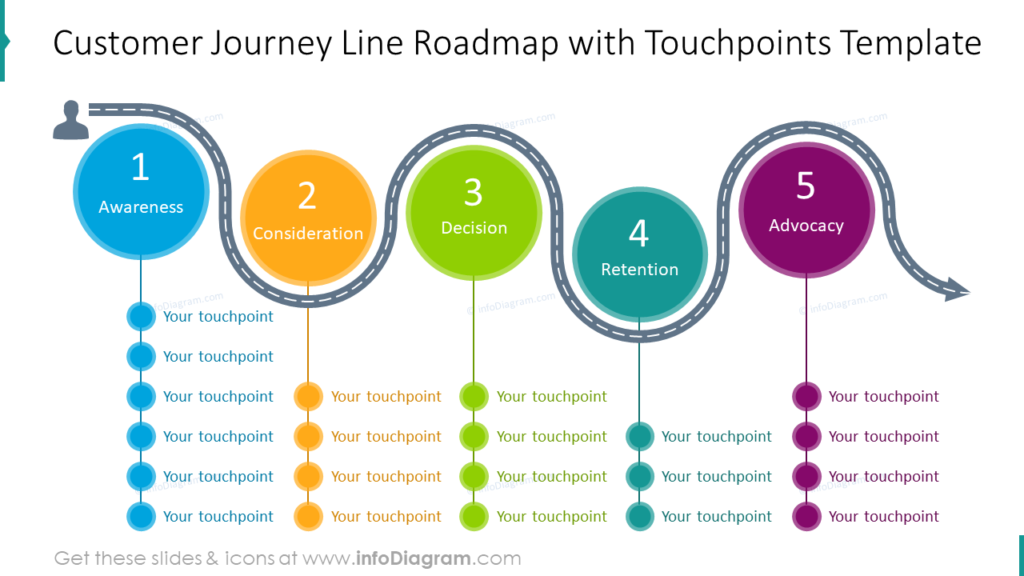Unlocking The Power Of 5 3 Customer Service: A Comprehensive Guide
In today's competitive business landscape, 5 3 customer service stands as a cornerstone for organizations striving to excel in customer satisfaction and retention. Companies that prioritize customer service are more likely to thrive, with research showing that 86% of buyers will pay more for a better customer experience. This makes customer service not just a department, but a strategic advantage.
The concept of 5 3 customer service revolves around five key principles and three essential practices that enhance the quality of interactions between businesses and their customers. These principles focus on delivering personalized, efficient, and empathetic service that leaves a lasting impression. By mastering these techniques, businesses can transform customer interactions into meaningful relationships.
This article delves into the intricacies of 5 3 customer service, providing actionable insights and expert advice to help businesses elevate their service standards. Whether you're a small business owner or a customer service professional, this guide will equip you with the knowledge and tools needed to succeed in this vital area.
Read also:Angel Wicky Official Rising Star In The Spotlight
Table of Contents
- The Five Key Principles of Customer Service
- Three Essential Practices to Enhance Customer Service
- Why 5 3 Customer Service Matters
- The Role of Personalization in Customer Service
- How Technology Supports 5 3 Customer Service
- Common Challenges in Implementing 5 3 Customer Service
- Training Your Team for Exceptional Customer Service
- Measuring Success with Customer Service Metrics
- Real-World Examples of Successful 5 3 Customer Service
- The Future of 5 3 Customer Service
The Five Key Principles of Customer Service
At the heart of 5 3 customer service lies five foundational principles that guide every interaction. These principles are designed to ensure that customers feel valued, heard, and respected at every touchpoint.
Principle 1: Empathy
Empathy is the cornerstone of effective customer service. It involves understanding and sharing the feelings of your customers. By actively listening and acknowledging their concerns, businesses can build trust and rapport. Studies show that empathetic customer service can increase customer loyalty by up to 40%.
Principle 2: Efficiency
Efficiency is about resolving customer issues quickly and effectively. In today's fast-paced world, customers expect swift responses and solutions. Streamlining processes and leveraging technology can significantly improve efficiency in customer service operations.
Principle 3: Personalization
Personalization involves tailoring interactions to meet the unique needs of each customer. By using data and analytics, businesses can offer customized experiences that resonate with individual preferences and behaviors. This approach not only enhances satisfaction but also fosters long-term relationships.
Principle 4: Proactivity
Proactive customer service means anticipating customer needs and addressing potential issues before they arise. This approach demonstrates a commitment to quality and reliability, setting businesses apart from their competitors.
Principle 5: Accountability
Accountability ensures that businesses take responsibility for their actions and strive to meet or exceed customer expectations. By holding themselves accountable, companies can build trust and credibility with their clientele.
Read also:Unveiling The Secrets Of Atliens Nyc A City Like No Other
Three Essential Practices to Enhance Customer Service
In addition to the five principles, there are three key practices that further enhance the quality of 5 3 customer service. These practices focus on improving communication, leveraging technology, and fostering a customer-centric culture.
Practice 1: Clear Communication
Clear and concise communication is vital for effective customer service. Whether it's through email, phone, or chat, ensuring that messages are understandable and professional helps avoid misunderstandings and builds confidence in your brand.
Practice 2: Technology Integration
Integrating technology into customer service operations can revolutionize the way businesses interact with their customers. Tools such as chatbots, CRM systems, and analytics platforms enable businesses to provide faster, more accurate, and personalized service.
Practice 3: Continuous Improvement
Continuous improvement involves regularly reviewing and refining customer service processes to ensure they remain effective and relevant. By seeking feedback and analyzing performance metrics, businesses can identify areas for growth and implement necessary changes.
Why 5 3 Customer Service Matters
5 3 customer service is more than just a buzzword; it's a strategic approach that can significantly impact a business's bottom line. Companies that prioritize customer service enjoy higher customer retention rates, increased revenue, and a stronger brand reputation. Research shows that businesses with superior customer service can charge up to 16% more than their competitors.
Moreover, in an era where customer reviews and ratings heavily influence purchasing decisions, delivering exceptional service is crucial. Positive experiences lead to word-of-mouth referrals, which are invaluable for business growth. Conversely, poor service can damage a brand's reputation and lead to customer churn.
The Role of Personalization in Customer Service
Personalization plays a critical role in 5 3 customer service by creating tailored experiences that resonate with individual customers. By leveraging data analytics, businesses can gain insights into customer preferences, behaviors, and needs, enabling them to offer personalized recommendations and solutions.
Some effective personalization strategies include:
- Using customer names in communications
- Offering personalized product recommendations
- Customizing marketing messages based on past interactions
- Providing location-based services
These strategies not only enhance customer satisfaction but also increase the likelihood of repeat business and customer advocacy.
How Technology Supports 5 3 Customer Service
Technology is a game-changer in the realm of customer service. From AI-powered chatbots to advanced CRM systems, businesses have access to a wide range of tools that enhance their ability to deliver exceptional service. These technologies enable businesses to automate repetitive tasks, analyze customer data, and provide real-time support.
Some key technologies driving 5 3 customer service include:
- Chatbots for instant customer support
- CRM systems for managing customer interactions
- Analytics platforms for tracking performance metrics
- Cloud-based solutions for remote customer service
By embracing these technologies, businesses can improve efficiency, reduce costs, and enhance the overall customer experience.
Common Challenges in Implementing 5 3 Customer Service
While the benefits of 5 3 customer service are clear, implementing this approach can present several challenges. These challenges include:
- Limited resources and budget constraints
- Resistance to change from employees
- Difficulty in measuring the impact of customer service initiatives
- Managing customer expectations in a rapidly evolving landscape
To overcome these challenges, businesses must invest in employee training, adopt innovative technologies, and establish clear performance metrics. By addressing these obstacles head-on, companies can successfully implement 5 3 customer service strategies.
Training Your Team for Exceptional Customer Service
Training is a critical component of delivering exceptional 5 3 customer service. Equipping employees with the skills and knowledge needed to excel in their roles ensures that customers receive consistent, high-quality service. Effective training programs focus on:
- Communication skills
- Problem-solving techniques
- Product and service knowledge
- Empathy and emotional intelligence
By investing in comprehensive training programs, businesses can empower their teams to deliver outstanding service that aligns with the principles and practices of 5 3 customer service.
Measuring Success with Customer Service Metrics
Measuring the success of 5 3 customer service initiatives requires the use of key performance indicators (KPIs) and metrics. These metrics provide valuable insights into the effectiveness of customer service strategies and highlight areas for improvement. Common customer service metrics include:
- Customer satisfaction (CSAT) scores
- Net promoter score (NPS)
- First response time
- Resolution time
By regularly monitoring these metrics, businesses can make data-driven decisions to enhance their customer service operations.
Real-World Examples of Successful 5 3 Customer Service
Several companies have successfully implemented 5 3 customer service strategies, setting benchmarks for others to follow. For instance:
- Amazon's emphasis on customer-centricity and efficient delivery
- Disney's focus on personalized experiences and exceptional service
- Southwest Airlines' commitment to transparency and customer satisfaction
These companies demonstrate that by prioritizing customer service, businesses can achieve remarkable success and build enduring customer relationships.
The Future of 5 3 Customer Service
The future of 5 3 customer service is bright, with emerging technologies and evolving customer expectations shaping the landscape. Artificial intelligence, machine learning, and automation will continue to play a pivotal role in enhancing service delivery. Additionally, businesses will increasingly focus on sustainability and ethical practices, aligning their service strategies with broader social and environmental goals.
To stay ahead in this dynamic environment, businesses must remain adaptable, innovative, and committed to delivering exceptional customer experiences. By embracing the principles and practices of 5 3 customer service, companies can position themselves for long-term success in an increasingly competitive marketplace.
Conclusion
5 3 customer service represents a holistic approach to enhancing customer experiences and building lasting relationships. By adhering to the five key principles and three essential practices outlined in this guide, businesses can deliver exceptional service that meets and exceeds customer expectations. Remember, customer service is not just a department—it's a mindset that permeates every aspect of your organization.
We encourage you to implement the strategies discussed in this article and share your experiences in the comments below. Your feedback helps us improve and provides valuable insights for fellow readers. For more informative content, explore our other articles and stay updated on the latest trends in customer service.
Sources:
- Harvard Business Review
- Forrester Research
- Gartner


